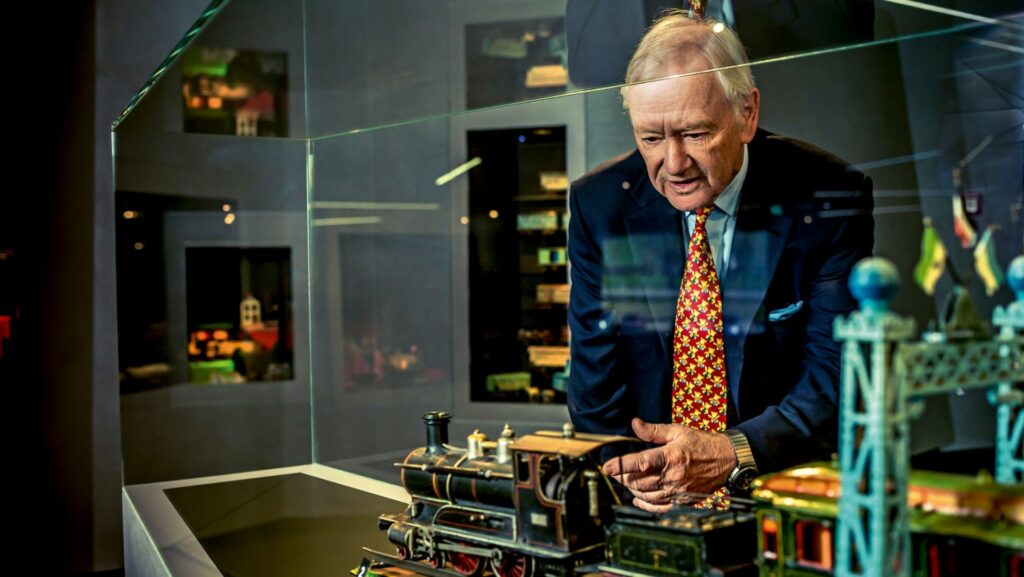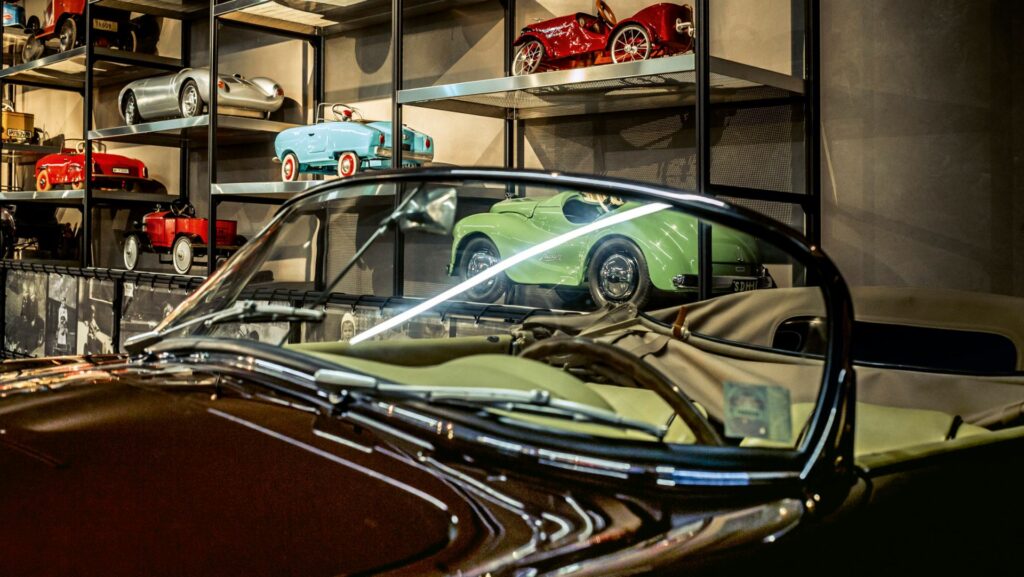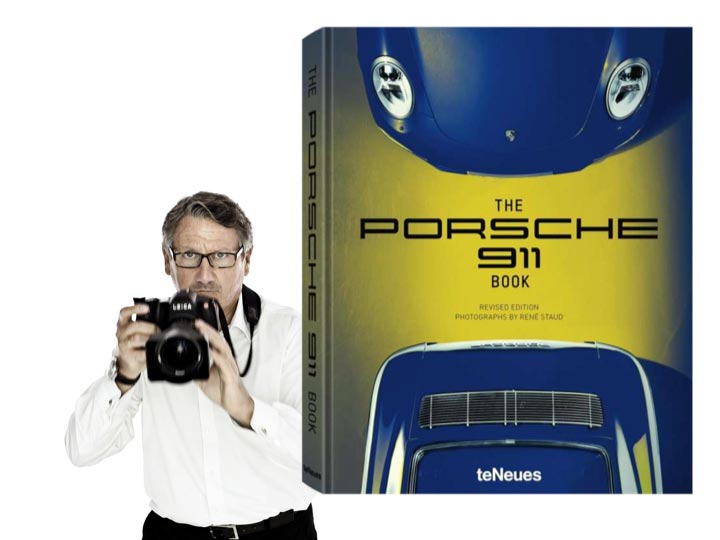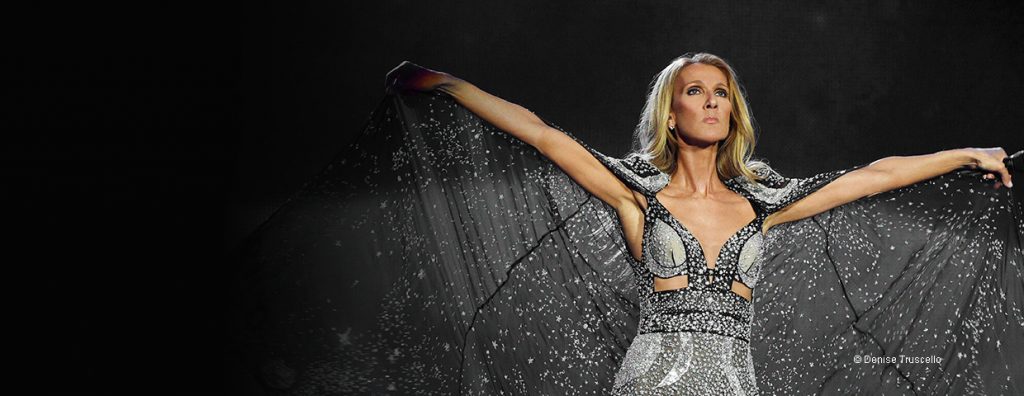A tour with Hans-Peter Porsche through his “TraumWerk” – an impressive toy experience world – rightly deserves its name. The numbers alone are impressive: 2,500 square meters of permanent tin toy exhibition, 550 square meters of model railroad world. This is where Hans-Peter Porsche shows all his passion; collected over 40 years, but also stored for decades only in boxes. “Here, look, that’s the characteristic crocodile, the famous Märklin locomotive. And there these ships, one more beautiful than the other, and all so detailed, this is high craftsmanship.” A very friendly gentleman, white hair, dark jacket, red tie with bear motifs, leads his guests through the exhibition. Alert, twinkling eyes and always a smile on his face. With each new toy exhibit, his eyes sparkle more and more. Enthusiasm from the bottom of his heart. Ferry Porsche’s son has built a museum for his collection in the Berchtesgadener Land region in southeastern Germany.
450 boxes of tin toys and model trains
“In 1977, I wanted to build a Märklin H0 railroad for my four-year-old son, also in memory of my own model railroad. The trip to the toy store in Bad Reichenhall was fateful.” Disastrous means: Hans-Peter Porsche took out a subscription with Märklin. Every locomotive, every new train the company released found its way to him. Porsche attended auctions and trade shows, socialized with tin toy and model train collectors around the world. And he collected. That’s how 450 boxes accumulated in his private home near Salzburg. “The whole cellar, the entire attic was full. But somehow it was unsatisfactory to store all these wonderful pieces only in boxes. So my son and I decided: we want to show the collection to the public.”

In the Berchtesgadener Land, Hans-Peter Porsche has realized his dream factory.
Porsche commissioned the Berlin architect Volker Staab to build an exhibition building whose circuit follows the shape of a horizontal figure eight – the classic route of a small railway layout or car racing circuit. The first part of the tour: the permanent exhibition of tin toys. 150 showcases with countless train stations, cars, airplanes, ships, shops, trains and so much more. The second part: the model railway world.
Hans-Peter Porsche: “This precision is what makes these things so unique for me”.
“Go on, come on! This 1910 swimming pool, it was in the master bedroom at my house. If you fill it up with water and run the pump there, water comes out of the little shower. It’s one of the highlights here at TraumWerk.” Most men’s rooms have hunting trophies. Not at Hans-Peter Porsche’s. “That precision even back in the day, that’s what makes these things so unique to me.” This is what appreciation for technical perfection sounds like. “In my whole life, I like to make things as perfect as possible. I’m just a Scorpio.” And apparently it’s also the engineering gene of an entire family that the grandson of the company’s founder carries: “My brothers and I loved to tinker when we were kids. Our mother once said at Easter: ‘Please, boys, paint the eggs.’ So my oldest brother, Ferdinand Alexander, constructed a machine from the Märklin construction kit, I cut corks to size, stretched the egg between them, installed a holder for the paintbrush, a transmission with gears, cranked – and poof, we had coloured eggs. We weren’t ten years old at the time.” At the TraumWerk, what belongs together seems to come together. With the onset of industrialization in the 19th century, tin toys replaced the era of wooden toys. The tour through the exhibition leads past submarines, ships, steam engines and cars. Exhibits from all eras and selected toy manufacturers from all over the world. The oldest piece: a locomotive from 1865. Some exhibits, such as a tin barrel the size of a thimble, are comparatively inexpensive at 50 euros, while others, such as a ship the size of a moving box, have the value of a family home.
TraumWerk shows a selection of the personal car collection
Finally, a large wall of shelves with pedal cars and electric cars for children. A silver Porsche 550 Spyder. But where did the scuffs come from? “Yeah, it was at my house. My grandkids learned to drive it. Now it’s a little beat up. But that doesn’t matter. After all, that’s how we all got started.”

Visitors can marvel at a selection of pedal and electric cars for children
Of course, automobile fans also get their money’s worth in Mr. Porsche’s world of experience. The TraumWerk’s collection includes a fine selection of Hans-Peter Porsche’s personal automobile collection: Porsche 904; Porsche 356, the car that competed three times in Liège-Rome-Liège; next to it, the problem child, a Porsche 959, “it has to be driven every month, long periods of standing don’t do it any good”; an Austro-Daimler, “a gift from my son”; the XL1 one-liter car from Volkswagen; a Porsche 914 as a Targa; Porsche 944; Porsche 928-and a light blue Porsche 912, “a very special piece. My mother got it for Christmas in 1966. For the last 20 years it was owned by an Italian lady. I was just able to buy it back. It’s in its original 1966 condition.”
Each exhibit in the collection tells its own story. The most personal showcase in the exhibition can be found at the end of the tour on the first floor. Inside: a toy Mercedes, painted by Hans-Peter Porsche as a child, a racing car, a teddy bear-and the first bear tie. “An acquaintance from Stuttgart gave it to me a long time ago. Today I own more than 600 bear ties. I’ve always been a collector: first beer mats, then matchboxes, later whisks for mixing cocktails.” The ramp leads back down to the foyer. Porsche seems to be getting restless. A follow-up appointment, pressing? A lunch date?

The Märklin model railway takes you through the most beautiful Alpine regions
“Quick, come on, let’s go!” Porsche pushes the guests into the second part of the exhibition: the model railway world. “But be careful, you’ll be photographed there.” And sure enough, the moment you enter the room, a figure flashes out of the scenery into the visitor aisle.
This is where the heart of the TraumWerk beats. A 365 square meter landscape, five meters high. A three-country corner in miniature: Austria, Switzerland and Germany, including Lake Constance. 180 trains, all from Porsche’s personal collection. 40 of them run simultaneously on nine independent tracks – a total of 2.7 kilometers of track – while the others rest in 32 staging yards beneath the layout. 30 model cars are on the road. The skiers at Semmering aren’t sliding down the mountain-“not yet,” Porsche calls out. Instead, a small scene just to the right of the entrance. A hill by the lake. A white Porsche Cayenne comes down the road. It stops at the intersection, flashes its lights, turns into the lake property, and stops again in front of the garage. The gate opens, the Porsche drives in, the gate closes. Now the visitor understands what technical attention to detail means.
Here goes the heart of Hans-Peter Porsche
There’s a lot to discover: a dance floor in the Salzburger Land; in a hidden spot in the mountains, a pair of lovers intimately turned toward each other, “the rascals slipped it to me”; the welding robots flashing at the Porsche plant in Zuffenhausen; Porsche’s grandfather’s house on Feuerbacher Weg in Stuttgart, in whose garage the first VW Beetle was created-and also the landlord of the TraumWerk himself, gazing into the distance on the shore of a lake. Four technicians and a model maker monitor the 16 computers in the control center. A model railway specialist from near Mainz built the layout with his team within two years. He reconstructed houses and stations from original plans and photos. Hans-Peter Porsche glued trees with his own hands-not all of them, there are 80,000 in all-and his son soldered wires. The layout traveled to the small town of Anger in modules weighing 300 to 400 kilograms each and was assembled here. There were unexpected problems to solve: “Before the opening, the room was too dry. The wood moved too much, some of the rails cracked open, and the entire installation came apart at the seams. We had to learn a lot.” But that is forgotten. This is where Hans-Peter Porsche’s heart is now. The birds are chirping, the sun is winking out from behind the mountains. One cycle of the multimedia production lasts 17 minutes and 40 seconds with the help of 30 beamers, until night falls over the scenery after a thunderstorm. In the middle of the darkness of the room, a moved Hans-Peter Porsche stands and sighs: “I’ve really seen this many times now, but I’m moved every time.”
TIP FROM THE GO SIXT EDITORIAL:
The Traumwerk is more than just a museum restaurant. Here they take time for their guests and the food. Quality is served here. For those who want to dine outside the museum restaurant, here is our second tip: DerAltwirt- Der Schnitzelwirt. (only available in german language)
Here you will be welcomed by the Herenik family in the 700 year old inn in the village of Anger-Aufham.
Hans-Peter Porsche
born in 1940, engineer and entrepreneur, is the grandson of company founder Ferdinand Porsche. From 1964 to 1972, Hans-Peter Porsche was head of production at Porsche. Today he is a member of the Supervisory Board of Porsche AG and Porsche Automobil Holding SE.
Editor’s tip:
Stuttgart is always worth a visit, and so is the Porsche Museum. Almost 100 vehicles and more than 200 small exhibits are waiting to be discovered here.








